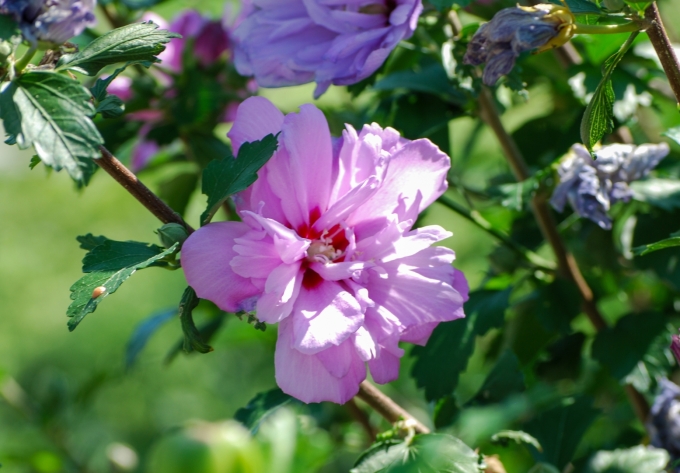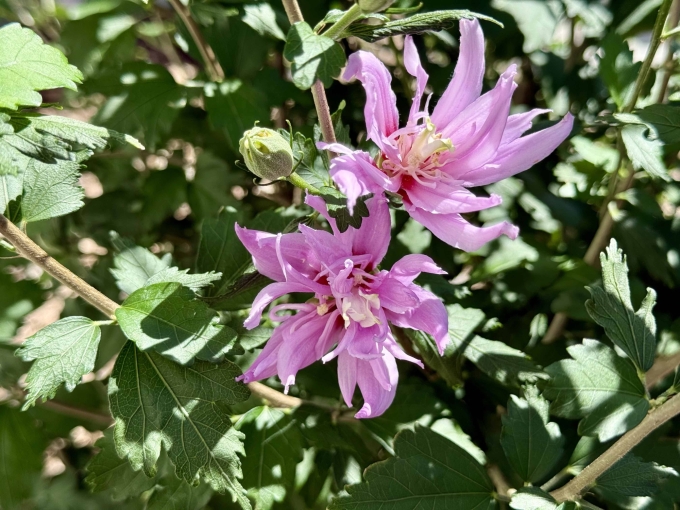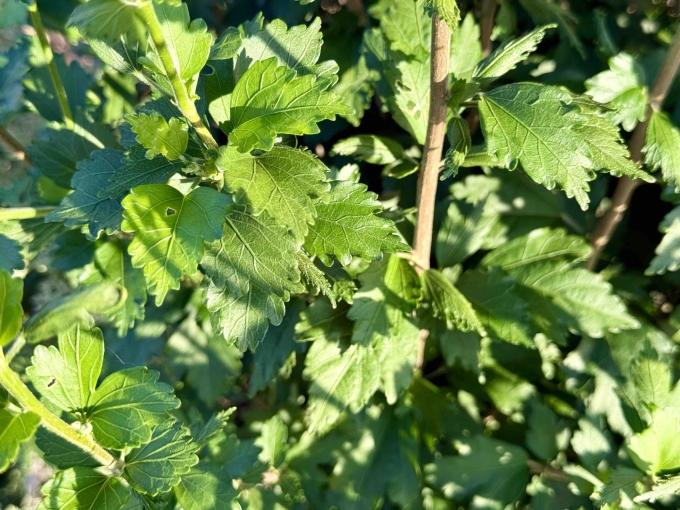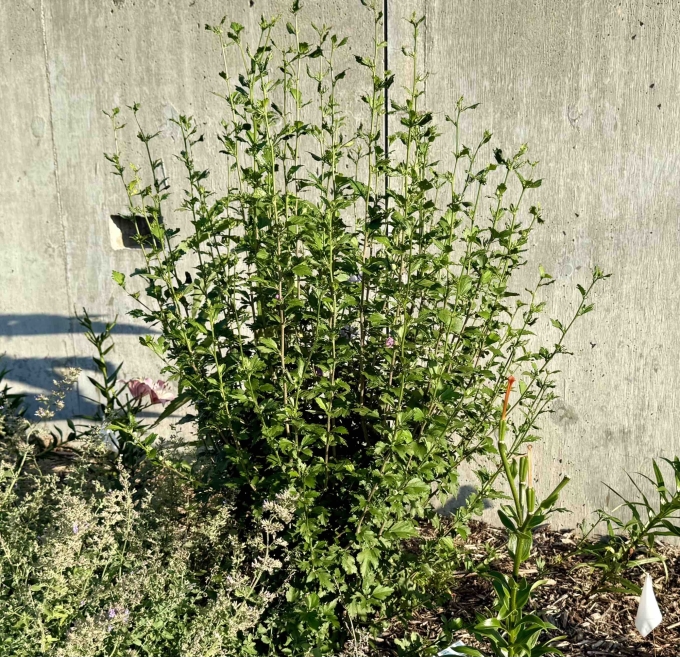Common Name: Ardens Rose of Sharon
Family: Malvaceae
Plant Type: Deciduous Shrub
Native Range: China and India; cultivated and widely naturalized
Hardiness Zones: 5–8 (can survive in protected areas of zone 4, so suitable for most of Nebraska)
Height: 6.0 to 10.0 feet
Spread: 4.0 to 6.0 feet
Bloom Time: Midsummer to fall (July–September in Nebraska)
Bloom Description: Showy, semi-double, lavender-purple flowers with a reddish center
Sun Exposure: Full sun to part sun
Water Needs: Medium
Soil Preference: Well-drained soils; tolerates a variety of soil types including clay
Management Level: Low
Suggested Use: Specimen shrub, hedge, foundation planting, mixed borders
Attracts: Butterflies, hummingbirds, pollinators
Tolerates: Heat, drought, clay soils, urban conditions
Notable Features: Long bloom season, large semi-double flowers, upright habit
Nebraska Growing Notes:
‘Ardens’ is a vigorous and reliable cultivar of Rose of Sharon, well-suited for Nebraska gardens. It thrives in full sun, which promotes best flowering and a dense habit, but also tolerates some light shade.
It handles heat, humidity, and the occasional drought of Nebraska summers with ease once established. In heavier clay soils, planting in raised beds or improving drainage helps reduce root stress.
Prune in early spring to shape or rejuvenate the plant, as flowers form on new growth. Removing seed pods after bloom may reduce self-seeding and maintain a tidy appearance.
Landscape Use:
Excellent as a specimen plant, screen or hedge, foundation planting, or in mixed shrub borders for summer color. Its upright form makes it suitable for narrow spaces and vertical interest. Pairs well with Hydrangea paniculata, ornamental grasses, and perennials like Rudbeckia and Echinacea.
Caution:
Non-toxic, but it can self-seed in favorable conditions, which may require occasional management. Deer may browse young plants. Stems can become brittle in ice storms, consider placement accordingly.
Garden Locations:




